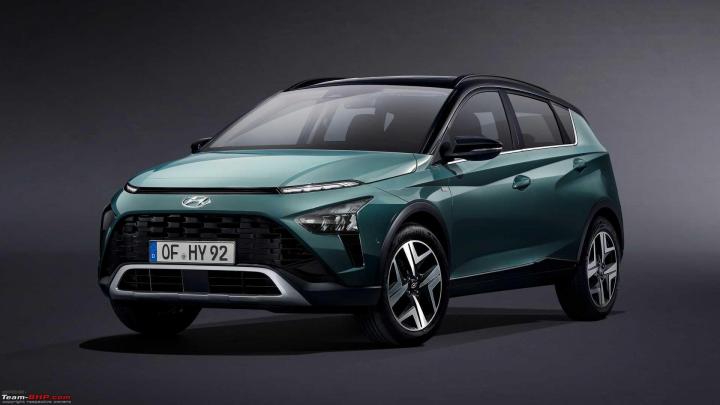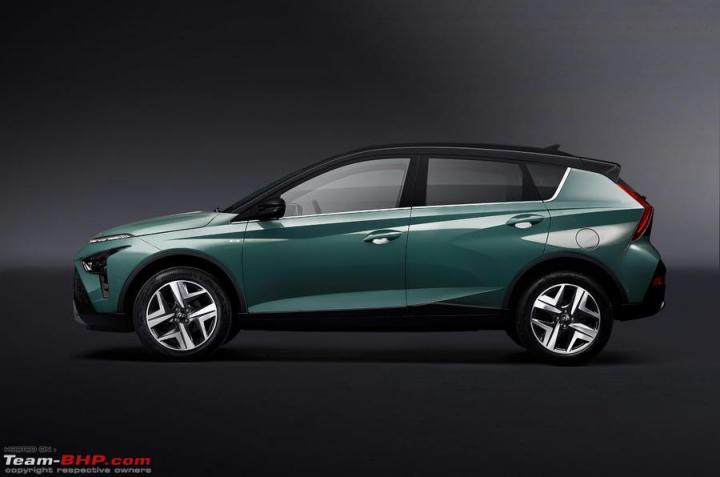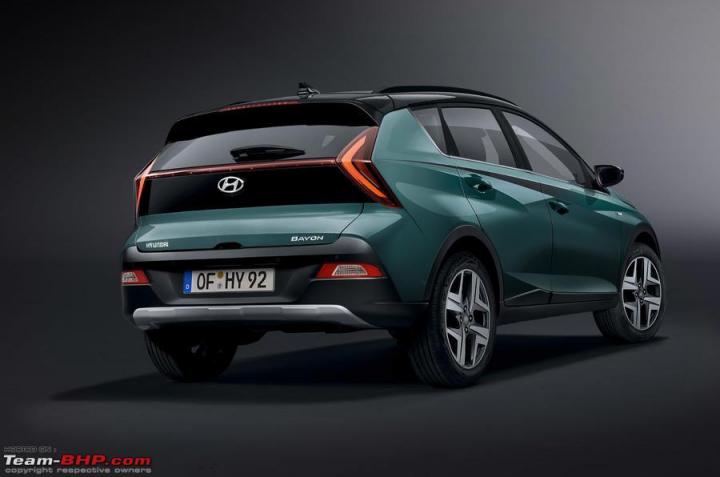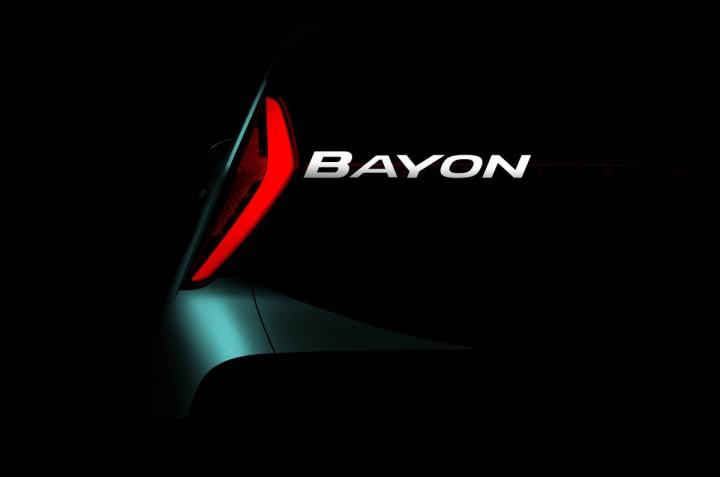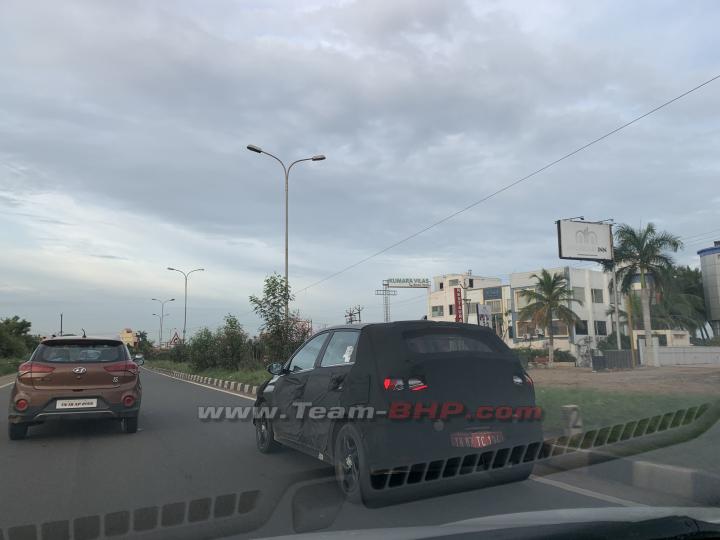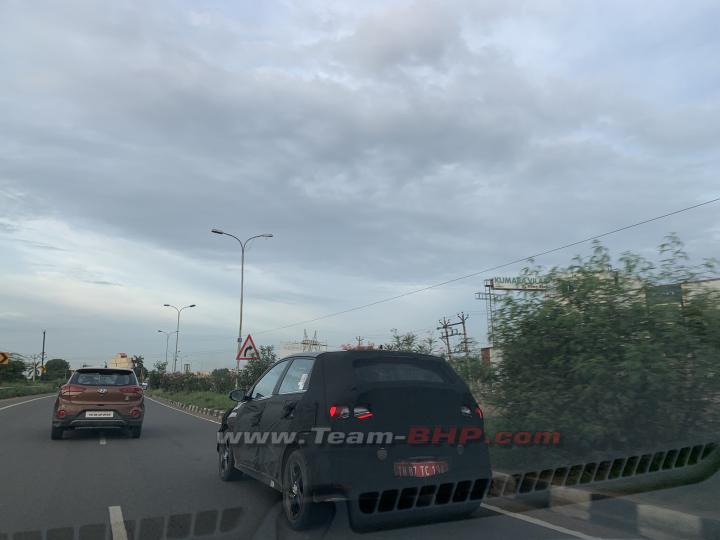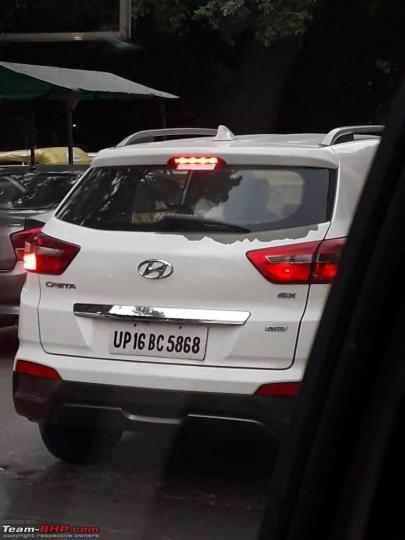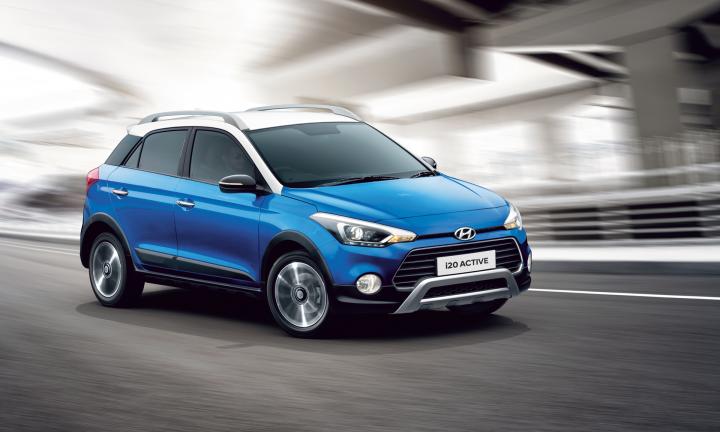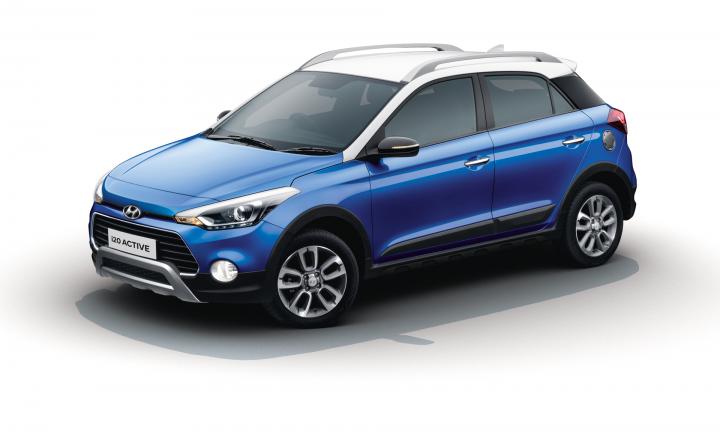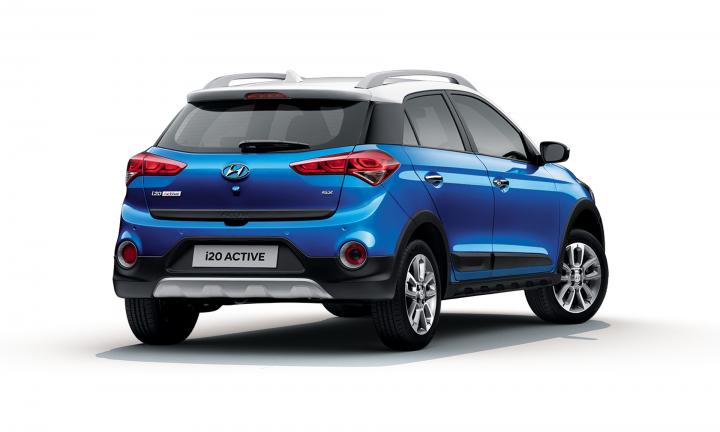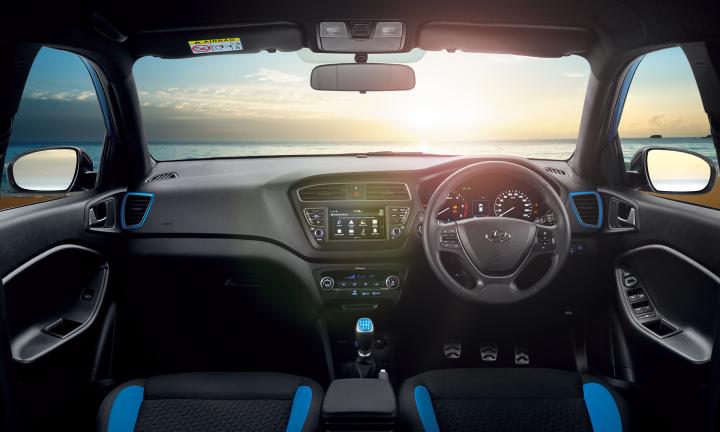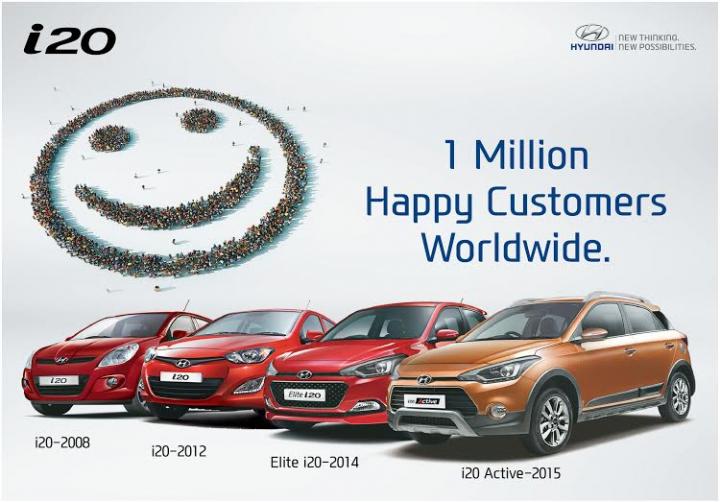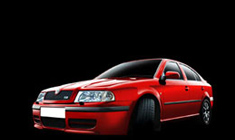News
140 km daily commute to work: Improving the safety & comfort of my i20
I drive between Ghaziabad to Meerut, consisting of highways, city roads & a small section of single-lane road as well.
BHPian NG_EV recently shared this with other enthusiasts.
Due to a recent job change, my daily commute has increased to 140 km (round trip). At this point in time, relocating to my new place of work is not feasible as the new job is not permanent. However, I still see myself driving the route for at least 6 months. I request the members to suggest the things that I should do to make the trip safer and more comfortable.
Car: i20 Active SX (Petrol)
Route: Ghaziabad to Meerut [Half Highway, part city (under construction for RRTS and routine city traffic), and a few km of single lane road (goes through fields)].
Concerns: Weather (Monsoons and winter fog), routine Indian bad driving
I have already done the following:
- Dashcam Installation - Front and Back
- TPMS installed
- All 4 tyres changed over the last 1 year
- Jumper cables purchased
- Service is done regularly as per the schedule
- Wiper blades are new
- The playlist for driving is set every day before the drive
- The driving speed is around 70 Km/h in the left-most lane
I also have two parking options at my workplace, please help me decide the better one.
One is under the sun with no shade:
- Advantage: No risk of rats, squirrels.
- Disadvantage: Cabin gets too hot and takes time to cool down
The second option is under a tree:
- Advantage: Cool cabin, paint is protected
- Disadvantage: Spotted many squirrels, don't know if they damage cars like rats, and if the rat repellent coating would be helpful.
Planned additions:
- Rat repellent, underbody and silencer coat from 3M
- Purchase Tow cable - please suggest a good one
- HIDs (Unsure)
Please help me in deciding what else is to be done in order to improve the drive and in deciding the parking spot. Thanks.
P.S: EV purchase is not an option right now as I am not willing to go for Nexon, Tigor or ZS EV. I am waiting for an EV built on a dedicated platform.
Here's what GTO had to say on the matter:
140 km is a lot of driving on a daily basis. My suggestion = don't waste time. Just as an example, you could use this time to listen to podcasts. For inspiration, or learning / spiritual / business. Anything.
Whenever I have a long commute during the day which I know will not be enjoyable, I call for an Uber and work from the front passenger seat (laptop or work calls). But I don't think that's an option for you. Unless you carpool with someone.
You should seriously check if there are other people doing the same commute, whether to your office or otherwise. Carpool. You could get a lot more work done in that time and hence, have more free time in the evenings or weekends.
Here's what BHPian jkrishnakj had to say on the matter:
I was doing 98 km a day, for almost 2 years till the pandemic struck us. I didn’t do anything out of the ordinary.
That said, I always had a small box of snacks/fruits and one water bottle in the car all the time (replenished every day)
There is only so much music you would want to listen to. I used to listen to podcasts or listening to comedy shows. Some days, I used to be talking to family/relatives over Bluetooth (I know, it’s not legal).
The other thing that worked for me is that I commuted from 10.30 am onwards to the office and return was never before 9.30 pm. That way, I used to average 55-70 minutes of commute times.
Here's what BHPian Dry Ice had to say on the matter:
As many have commented before me, you are worried about the wrong “machine” here. Think of what this long commute will do to your health. A battered car is easy to replace, but not your health or well being.
Look for carpooling options even if it means you drive some distance within the city to reach each other’s place. Around 4 years back, I had a minimal commute (in terms of distance) of ~12kms. But, I still made it a point to find people I could carpool with so that I don’t have to drive every day. I found 2 willing colleagues soon enough who were also fed up with driving every day. We spent about 15 mins more picking each other up every day, but, it was fine since overall everyone's driving time had reduced by over 60%.
Some days, I also used app-based buses (Ola used to run buses at that time and there was another app called Shuttl IIRC). This ensured on-time journeys and no unnecessary haggles with the cab drivers. See if this can be an option for your route.
I would reiterate, don’t overthink about your car. Most modern cars with reasonable maintenance records will be fine.
Check out BHPian comments for more insights and information.
- Tags:
- Indian
- Hyundai i20
- i20 Active
News
Hyundai Bayon crossover unveiled
The Bayon shares its platform with the latest i20 and replaces the i20 Active in the European market.
Hyundai has revealed the Bayon crossover. The car shares its platform with the latest i20 and replaces the i20 Active in the European market.
The Hyundai Bayon is named after the French city of Bayonne. It features a large radiator grille and triangular headlamp clusters that give it a quirky look. The rear has an unconventional design as well. It features V-shaped tail lamps with a light bar.
The interior of the Bayon is identical to the new i20. It features a touchscreen infotainment head-unit and a digital instrument cluster. The car also borrows the i20's switchgear and 4-spoke steering wheel.
The Bayon comes with two engine options. These include a 1.2-litre naturally aspirated petrol unit that puts out 83 BHP and a 1.0-litre turbo-petrol unit with mild-hybrid tech that is available in two states of tune - 99 BHP and 118 BHP. Transmission options include a 5-speed manual gearbox and a 6-speed iMT.
- Tags:
- Indian
- Bayon
- i20 Active
- i20
News
Hyundai i20-based Bayon crossover leaked
The Bayon will replace the i20 Active in the European market.
Hyundai had released a teaser image of the Bayon in November last year. New images of the i20-based crossover have now leaked online.
The Bayon will replace the i20 Active in the European market and is named after the French city of Bayonne. The car looks rather quirky with a large grille and triangular headlamp pods that are positioned on the front bumper. It also boasts an unconventional rear end with large V-shaped tail lamps and a light bar.
The interior of the Bayon looks identical to its hatchback sibling. The image reveals a 4-spoke steering wheel and a touchscreen infotainment head-unit.
In Europe, the Bayon could be offered with the same powertrain options as the i20. These include a 1.2-litre, 4-cylinder petrol engine producing 84 BHP and a 1.0-litre, turbo-petrol unit with 118 BHP. The car could also get a mild-hybrid option. Customers are likely get a choice of 5-speed manual, 6-speed manual and 7-speed dual-clutch automatic transmissions.
- Tags:
- Indian
- i20 Active
- i20
- Bayon
News
Hyundai Bayon crossover to replace i20 Active in Europe
The Bayon is expected based on the same platform as the new i20.
Hyundai has released a teaser image of its upcoming crossover called the Bayon. It will replace the i20 Active in the European market around mid-2021.
The Hyundai Bayon is named after the French city of Bayonne. The car is expected to be based on the same platform as the i20 hatchback and will be positioned below the Kona in the company's line-up. The teaser image partially reveals the car's rear end and its boomerang shaped tail lamp.
In Europe, the Bayon could be offered with the same powertrain options as the i20. These include a 1.2-litre, 4-cylinder petrol engine producing 84 BHP and a 1.0-litre, turbo-petrol unit with 118 BHP. The car could also get a mild-hybrid option. Customers are likely get a choice of 5-speed manual, 6-speed manual and 7-speed dual-clutch automatic transmissions.
The Hyundai Bayon will compete with the Toyota Yaris Cross and Ford Puma in the European market.
- Tags:
- Indian
- Bayon
- i20 Active
- Elite i20
- i20
News
Scoop! New Hyundai i20 spied alongside old i20 Active
The old i20 Active looks slightly taller than the new i20 hatchback.
The third generation Hyundai i20 has been spotted testing once again. This time, the car was seen cruising past an old i20 Active, which gives us a chance to do a visual comparison the two cars.
The i20 Active clearly looks slightly taller than the new hatchback, which isn't surprising as the former has raised suspension and is fitted with roof rails. On the other hand, the new i20 sits lower to the ground. This particular test car is equipped with black 5-spoke alloy wheels. The i20 Active is no longer on sale in India.
Last month, a test mule of the new i20 was spotted without any camouflage. The images revealed the car's new front and rear fascias as well as its crisp lines.
The new i20 could get the same engine options as the Venue sub-4 meter crossover. It is likely to get a 1.2-litre naturally aspirated petrol engine paired with a 5-speed manual transmission and a 1.0-litre, turbo petrol unit which could be offered with a 6-speed manual and 7-speed DCT. Additionally, the car will also get a 1.5-litre diesel engine option. This engine could be offered with a 6-speed manual or 6-speed automatic gearbox.
The third generation i20 could be launched around October 2020.
Thanks to Vinay Khenna for sending these images in. Heartfelt gratitude for sharing them with other enthusiasts via this Team-BHP page!
- Tags:
- Indian
- Elite i20
- i20 Active
- i20
- spy shots
News
Hyundai i20 Active removed from website
Thanks to Manivannan Palanisamy for sending this information in. Heartfelt gratitude for sharing it with other enthusiasts via this Team-BHP page!
Hyundai India has removed the i20 Active from its official website. It is unclear whether the model has been discontinued or temporarily taken off the shelves before the BS6 emission regulations come into effect.
The i20 Active had a slightly higher overall height compared to the standard i20. It had black plastic cladding around the wheel arches and different front and rear bumpers with silver skid plates. The car also had different alloy wheels and roof rails.
The i20 Active was powered by a 1.2-litre, 4-cylinder petrol engine producing 82 BHP @ 6,000 rpm and 115 Nm @ 4,000 rpm. The engine was paired with a 5-speed manual transmission. It also came with a 1.4-litre, 4-cylinder diesel engine with 89 BHP @ 4,000 rpm and 220 Nm @ 1,500-2,750 rpm. This engine was offered with a 6-speed manual gearbox.
- Tags:
- Indian
- i20 Active
- Discontinued
News
Many Hyundais suffering from paint peeling off
Multiple reports of paint peeling off on Hyundais have surfaced online. Certain models of the i20 and Creta seem to be affected by this issue.
In June 2019, there was a report about paint peeling off on a 3-year old Hyundai i20 Active. Images revealed that the bonnet and tailgate were affected by this issue.
Since then, more cars have been reported to have similar issues. Customers have reported seeing bubbles forming on the paint surface before it starts to peel off. On most cars, the paint can be seen peeling off from under the rear windshield. Another commonality is the fact that all these cars are white.
Here are links to all the reported cases -
- Tags:
- Indian
- Elite i20
- i20 Active
- Creta
News
2018 Hyundai i20 Active launched at Rs. 6.99 lakh
Hyundai has silently launched the updated i20 Active in India with prices starting at Rs. 6.99 lakh (ex-showroom, Delhi). The cross-hatch now comes with dual-tone exterior colour options and new features. Unlike the Euro-spec i20 Active facelift, the Indian version is based on the pre-facelift Elite i20.
The i20 Active measures 3,995 mm in overall length, 1,760 mm in width and 1,555 mm in height, which is 50 mm more than the standard Elite i20. Both cars have an identical wheelbase of 2,570 mm.
On the outside, the i20 Active gets contrasting colour options for the roof. It retains its trapezoidal grille, which is flanked by circular fog lamps, while the front bumper has a silver scuff plate. The headlights come equipped with projectors and LED DRLs. At the rear, the car gets circular fog lamps and a bumper with silver scuff plate. It has a roof spoiler and black trim on the tailgate lip. The i20 Active gets black plastic cladding around the wheel arches and along the doorsills. It also gets silver roof rails. Besides this, the i20 Active rides on multi-spoke alloy wheels.
On the inside, the i20 Active gets the same dashboard as the outgoing model but with exterior colour-matched accents. Additionally, Hyundai has updated the 7.0-inch touchscreen infotainment system. It now supports Android Auto, Apple CarPlay as well as Mirror Link. The car also gets an adjustable front centre armrest and the rear armrest now has cup holders.
Under the bonnet, the new i20 Active comes with the same set of engines as its predecessor. The 1.2-litre, 4-cylinder petrol engine makes 82 BHP @ 6,000 rpm and peak torque of 115 Nm @ 4,000 rpm and comes paired with a 5-speed manual transmission. The 1.4-litre, 4-cylinder diesel engine produces 89 BHP @ 4,000 rpm and 220 Nm @ 1,500-2,750 rpm. This engine is offered with a 6-speed manual gearbox.
Variant-wise ex-showroom prices:
Petrol
Base - Rs. 6,99,990
S - Rs. 7,60,645
SX - Rs. 8,42,500
SX Dual tone - Rs. 8,66,262
Diesel
S - Rs. 8,96,205
SX - Rs. 9,77,314
SX Dual tone - Rs. 10,01,330
- Tags:
- Indian
- i20 Active
News
Euro-spec Hyundai i20, i20 Active facelift revealed
Hyundai has unveiled facelift versions of the i20 and i20 Active for the European market. The cars get refreshed styling, a new 7-speed dual-clutch transmission, Idle Stop /Go system (ISG) and updated safety features.
The i20 hatchback and i20 Active are offered with dual-tone exteriors with a blacked-out roof and ORVMs. Both cars get redesigned front and rear bumpers, smoked headlamps, updated tail lamps and redesigned tailgates. While, the i20 gets the cascading grille with a black mesh, the i20 Active retains its pre-facelift grille with a silver scuff plate and circular fog lamps. The i20 rides on a new dual-tone 15-inch alloy wheels, while the i20 Active gets 16-inch alloys. The latter being a pseudo SUV, it comes with black body cladding and silver roof rails.
Hyundai has also updated the interiors on both cars. The cars are now offered with dark interiors with a blue trim along the dashboard and on the door handles. Customers can also choose red and blue accents to the cabin, while black and greyish blue interiors are standard. The i20 and i20 Active are offered with a 7-inch touchscreen infotainment system with navigation and Apple CarPlay and Android Auto connectivity. Lower variants get a basic audio system with either a 3.8-inch or 5-inch monochrome screen.
In Europe, the i20 is available with a choice of 3 petrol engines. The 1.0-litre turbocharged petrol engine comes in two states of tune - 99 BHP and 118 BHP paired with a 5-speed manual and 6-speed manual transmissions respectively while the 7-speed dual-clutch is offered on both engines as an option. The 1.2-litre petrol engine is paired with a 5-speed manual gearbox. There are two variants of this engine - 74 BHP and 83 BHP. The i20 Active is available with a 1.4-litre petrol engine that makes 99 BHP and is offered with a 6-speed manual gearbox.
Both the i20 and i20 Active get Hyundai SmartSense active safety and driver assistance systems. These include Lane Departure Warning, Lane Keeping Assist, Forward Collision Avoidance Assist for city and interurban areas, Driver Attention Warning and High Beam Assist.
Hyundai offers a 5-year, unlimited km warranty on the i20. That said, it is not known when the car will be sold in India.
- Tags:
- Indian
- Elite i20
- i20 Active
- i20 facelift
- i20
News
Hyundai i20: 10 lakh global sales up
The Hyundai i20 has managed to clock 10 lakh unit global sales. This figure includes all products that have been sold under the i20 nameplate, which include the old i20, Elite i20, and the i20 Active hatchback crossover.
The original Hyundai i20 was launched in India in 2008. It received a mid-life facelift in 2012, while the all-new Elite i20 was launched in 2014. A year later, the Korean automaker introduced a crossover hatchback variant, named the i20 Active.
Even with the Maruti Baleno benefiting with the brand's customer-friendly image, the Elite i20 is continuously giving it a tough fight in the premium hatchback segment.
The i20 is produced at the company's manufacturing facility near Chennai. Hyundai India also exports the India-made i20 to international markets.
- Tags:
- Indian
- Elite i20
- i20
- i20 Active
Pages







